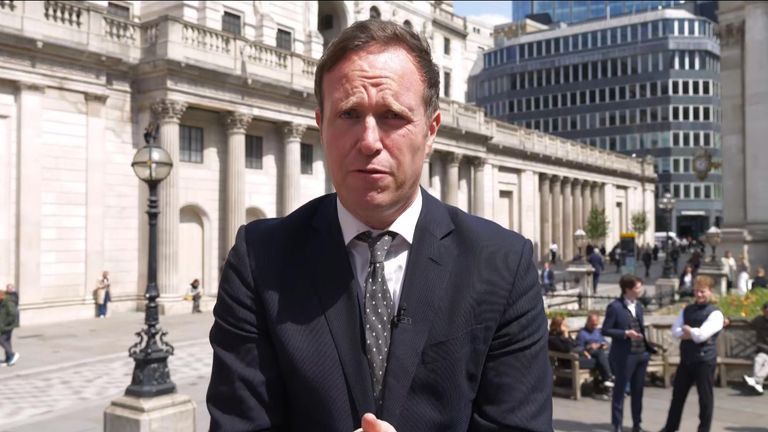Wage rises are slowing, and there are fewer jobs on offer as employers grapple with higher costs, official figures show.
In the month when minimum wage rose and employers’ national insurance increases kicked in, job vacancies fell, according to April data from the Office for National Statistics.
Job vacancies have now fallen below the pre-pandemic level of March 2020, down from a peak of 1.3 million in early 2022 to 761,000 last month.
Money blog: ‘Arnold Clark offered me a coffee cup for a £230 mistake’
Average weekly earnings continued to rise faster than inflation, at 5.5% down from 5.7%, while pay excluding bonuses grew at a lower 5.6% level, down from 5.9%, in the three months to March, ONS figures showed.
It means wages are rising more slowly than before but faster than the rate of price rises.
Latest official figures showed inflation stood at 2.6% in March.
Wage growth was described as “relatively strong” by Liz McKeown, director of economic statistics at the ONS, with increases in public and private sectors “now showing little difference”.
“The broader picture continues to be of the labour market cooling, with the number of employees on payroll falling in the first quarter of the year.
Unemployment also rose in March, the ONS said, ticking up from 4.4% to 4.5% a month earlier.
The ONS, however, continued to advise caution in interpreting changes in the monthly unemployment rate due to concerns over the figures’ reliability.
The exact number of unemployed people is unknown, partly because people don’t respond to surveys and answer the phone when the ONS calls.
What does it mean for interest rates?
The interest rate setters at the Bank of England last week cut rates, but have in the past expressed concern over wage rises, which can be inflationary and act against their mission to bring price rises to 2%.
Traders still just about expect there to be two cuts this year.
A cut is priced in for August with a second anticipated in November. By year-end end it’s expected the base interest rate will be 3.75%, down from the current 4.25%.











